

Why does it happen that, going into one room, you feel harmony and peace, the other interior, on the contrary, can cause unpleasant feelings, aggression, panic, anxiety. And the point is not in the placement of furniture, energy, or drummers, but in the combination of colors in the interior .
It is a well-known fact that colors and shades are divided into cold and warm, light and dark, bright and muted, that is, pastel. But how to combine colors in the interior? For this, tables for monochrome use of a shade, a combination of two, three, four or six colors were developed. In order not to be mistaken, suitable shades and colors are interconnected by lines.
The color scheme in the interior
Color table


The combination of two, three, four and six colors. Table
The combination of two, three or four shades is shown on the example of neutral tones.

Colors are also divided into bright and pastel . For example, a bright shade will add sun to the room, and pastel colors will make the room chamber, deep. If you can not decide on the color, use neutral shades - they will sound in unison with any interior.

A little later, we will describe in more detail about the prevailing color in the interior and give examples of designs, but for now we suggest reading the table, where the wrong and correct color combination is indicated.
Table of color combinations in the interior
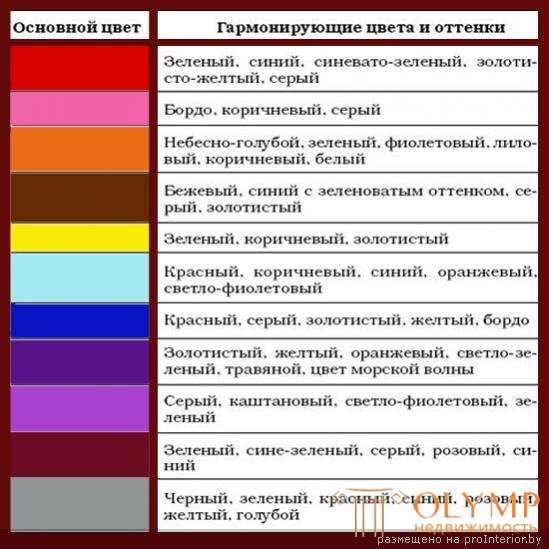

It would seem an unmistakable move - to trim the room in only one color. But the result will be terrible - the room will be faceless and nightmarish. Let's take the example of primary colors to consider how to make a room stylish, comfortable and harmonious.
White color is clear. But such an interior will seem lifeless and empty without accents. A combination of colors in the interior with bright colors will be appropriate: furniture fronts and decorative objects, art objects and textiles.
 The combination of white in the interior 1
The combination of white in the interior 1
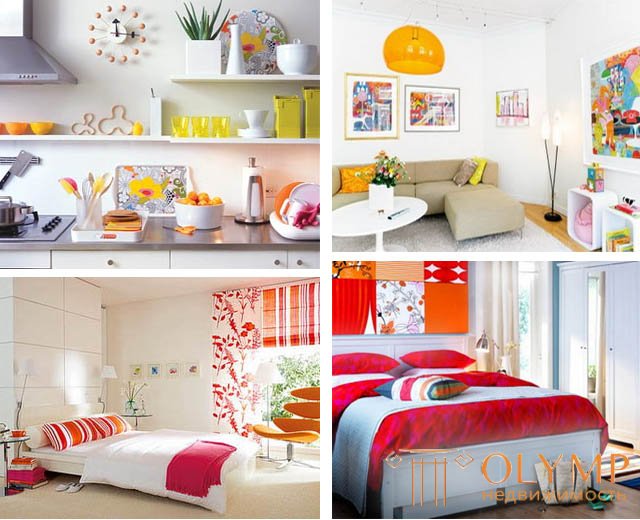
The combination of white in the interior 2
Black can be dark and absorbing if used in large quantities. Add light and rich colors to the interior: indigo, bright red, green. Even for the high-tech style, the interior in black only is a bust. Black color should not be used in the kitchen or in the nursery.


Red is the color of fire, passion and energy. Such an interior will cheer up if the main gamut is diluted with red details: furniture, pillows, curtains. If there is too much red in the room, the interior will no longer be comfortable, but will become aggressive. What should be the combination of colors in the interior, photo examples will show you. It is unacceptable to use red in large numbers in the nursery or bedroom. Complementary colors: black, pink, blue, silver, white, golden, orange.
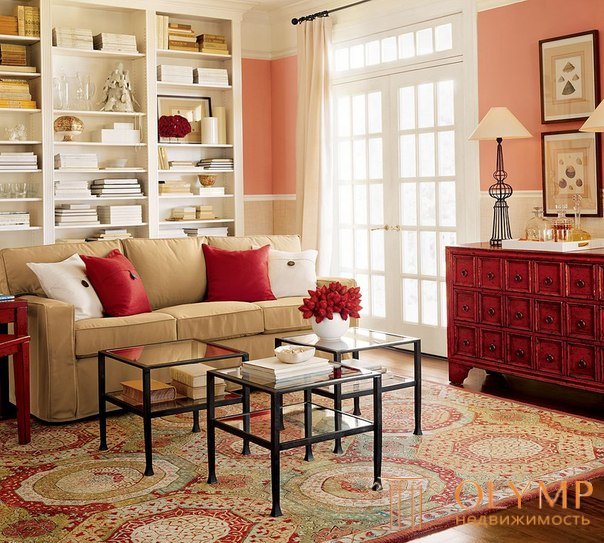

Pink color is gentle, girlish. It is also called marshmallow. Pink shades love Provence, Country style and Chebbi-chic. But the ratio of colors in the interior is such that pink is not the basis, but an addition to other shades. Complementary colors: gray, lemon, red, chocolate, white, sand.


Violet is a controversial color. It's all about the shades. He has light and dark, cold and warm tones and undertones. The combination of colors in the design - a difficult matter. That deep purple color is usually not used indoors, preference is given to diluted shades. In addition, it serves as an accent, emphasizing the style of the interior. Complementary colors: golden, pink, silver, green, blue-gray, white, blue.
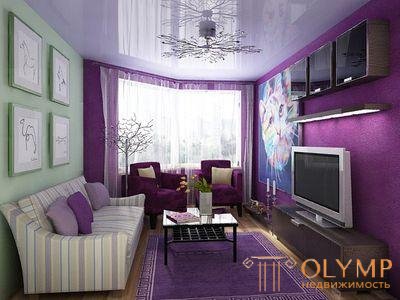
Hallway in purple shades

The combination of purple in the interior
Yellow color is joyful and sunny. You can use it in almost any room with the exception of small bathrooms and toilet rooms, otherwise it will literally stifle you with its brightness. Complementary colors: brown, green, orange, white, blue, black.
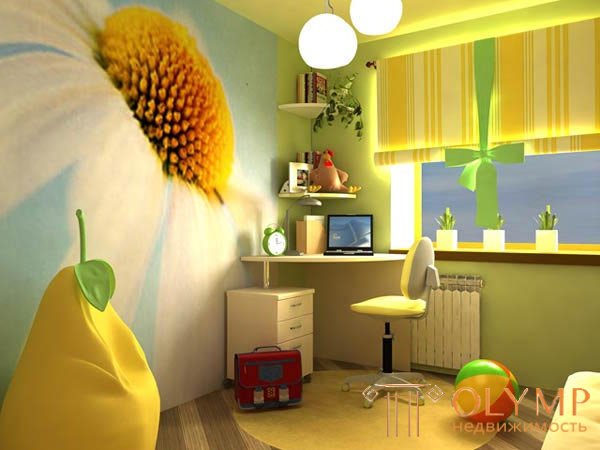
Children's room in yellow shades

The combination of yellow in the interior
Orange color can also be attributed to sunny, warm and cozy shades. Children, in which there are accents of orange color, will be bright and joyful. Color is also appropriate in the living room, bathroom, kitchen. What should not be done is to completely paint the walls, ceilings, floors in orange - they will crush. Complementary colors: white, yellow, gray, black, pink, green.
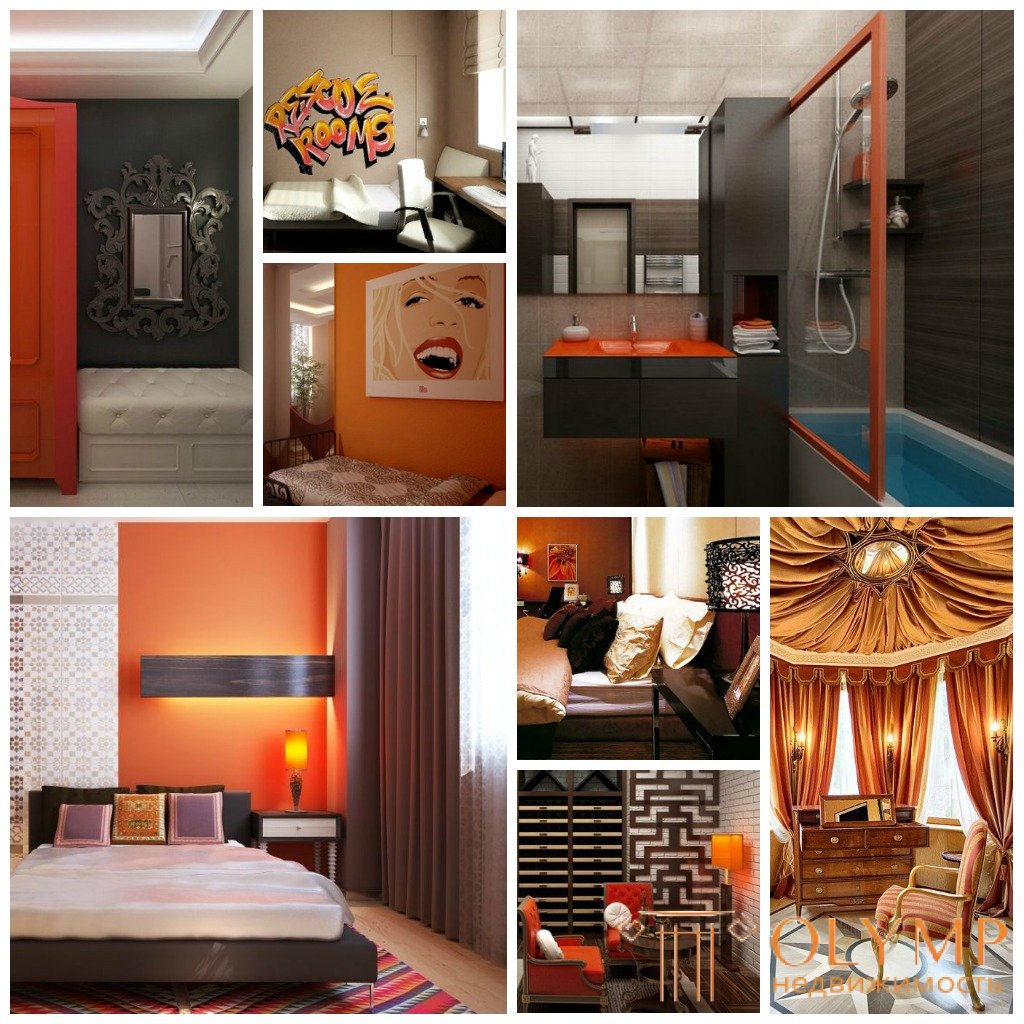
The combination of orange in the interior 1
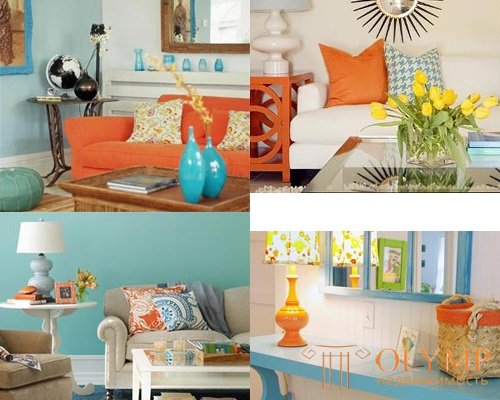
The combination of orange in the interior 2
Green color is considered natural. It can be used in hallways and nurseries, in the kitchen and in the living room, bathroom and bedroom. It will relieve tension, adjust for rest and relaxation, relieve the feeling of hunger. Complementary colors: yellow, black, golden, lemon, lime, blue.
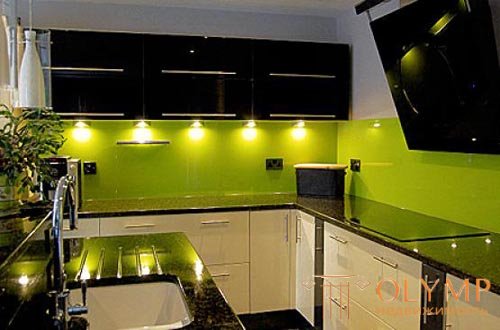
Kitchen in green
e 
The combination of green in the interior
Shades of blue and blue are calming and calming. Hot room will add coolness, a small space will make more visually. Complementary colors: gold, white, turquoise, purple, brown, silver, gray, red.
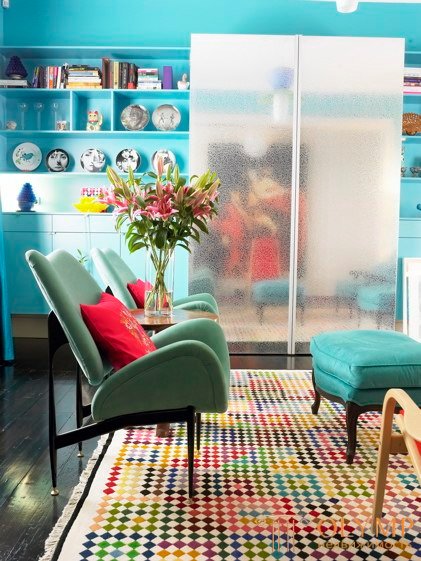
Shades of blue in the interior

Shades of blue in the interior
Brown color helps to focus. Therefore, offices are often decorated in chocolate shades. On the other hand, light brown shades relax and act as a sleeping pill. Therefore, in a bedroom the color of milk chocolate insomnia does not threaten you. Complementary colors: golden, blue, white, caramel.

Hallway in shades of brown
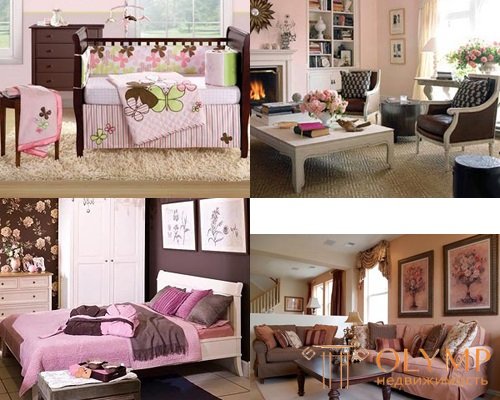
Brown color in the interior
Gray is considered dull and impersonal. But if you use the right color combination in the interior, the gray color will play. Complement it with other color accents - the gray color will emphasize their beauty or dilute their brightness and aggressiveness, making them soft and cozy. Complementary colors: pink, purple, green, black, blue.

The combination of gray color in the interior 1
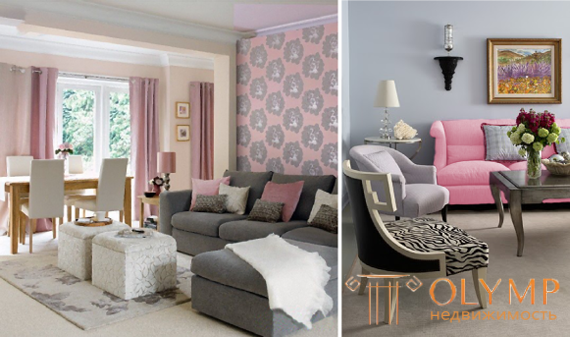
The combination of gray color in the interior 2
Having studied the art of combinatorics - a combination of colors, you can create a harmonious, beautiful and comfortable interior in any style you like.
Что бы оставить комментарий войдите
Комментарии (0)